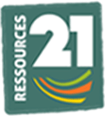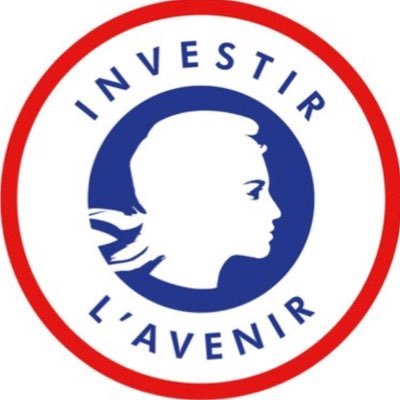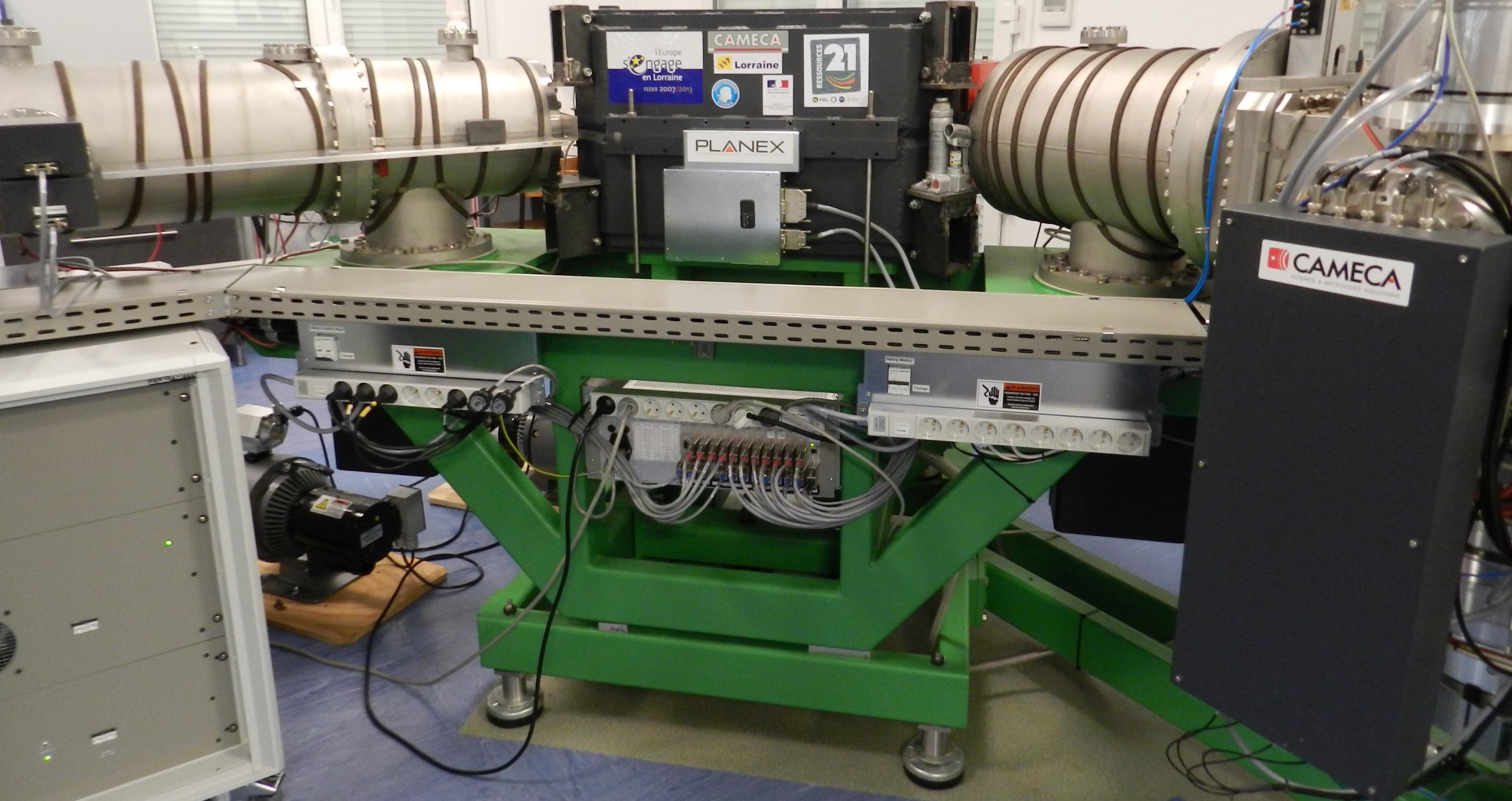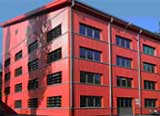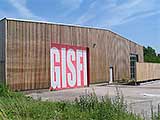Equipments financed by RESSOURCES21 |
The laboratories of Université de Lorraine gather a large scope of skills. These skills cover geosciences, mineral processing, engineering, environmental issues, bioremediation, hydrometallurgy, pyrometal-lurgy, etc
The LabEx has already contributed towards the financing of analytical equipment for a number of facilities:
ECOSCOPE
A MESOCOSM FACILITY TO EVALUATE STRESSOR IMPACTS ON HEADWATER STREAMS ACROSS MULTIPLE LEVELS OF BIOLOGICAL ORGANISATION
Objectives
To help the scientific community to address these issues, an outdoor mesocosm platform with 18 artificial channels of 3 meter long, with water circulation and roof system has been built to simulate headwater streams, and to explore the responses of the ecosystem set in places on the long term (several months), with a systemic approach taking into account several biological compartments (macroinvertebrates, bacteria, fungi, algae...). The channels are designed to allow changes in flow velocity, thermal and chemical conditions and habitat structure, and, obviously to combine those abiotic parameters with contaminants to explore multistress conditions. They are equipped with sensors for a real-time tracking of temperature, oxygen concentration and pH. The platform is open for research project in collaboration with academia, stakeholders and private investigators.
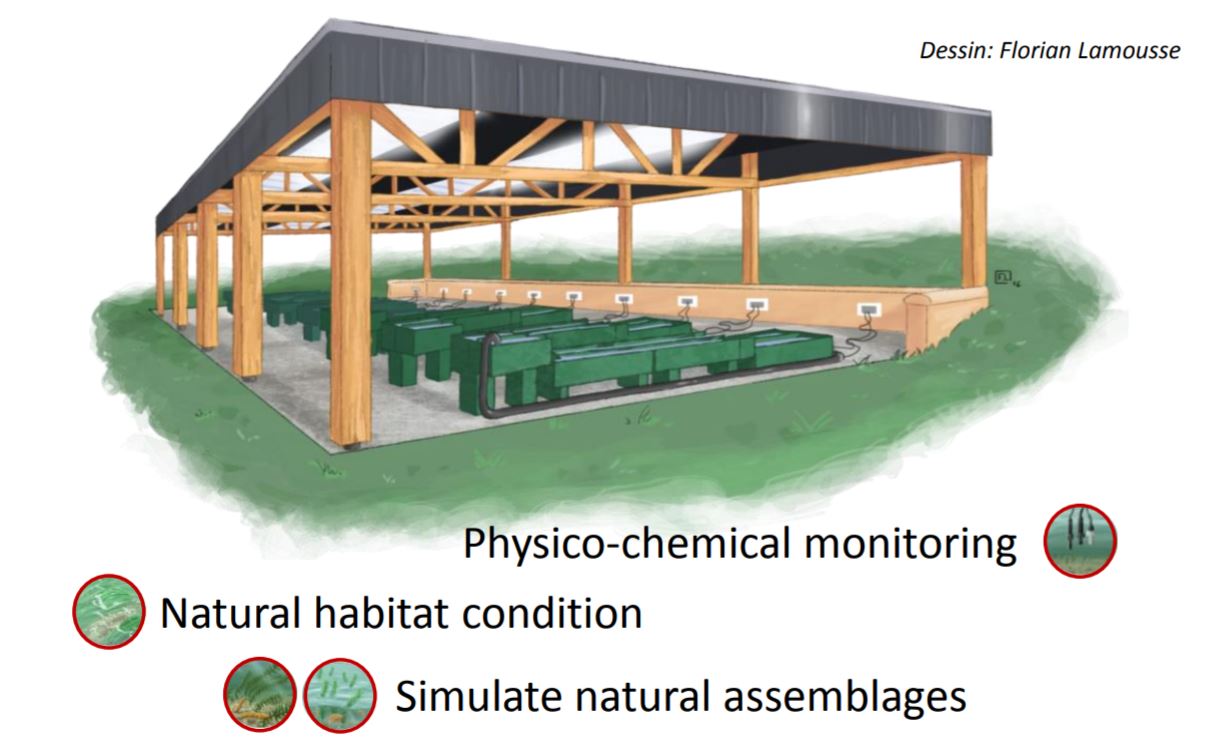
The new generation of high-performance ion microprobe (CAMECA)
HydroLAB
The HydroLAB is devoted to the development of flowsheets at the laboratory scale and the understanding of physicochemical phenomena, happening through hydrometallurgical processes.
HydroVAL uses data and flowsheets developed in HydroLAB at the laboratory scale to test and optimize flowsheets in mini-pilots. These two entities are connected with the new analytical platform PGM, which contains all analytical equipment required to perform relevant analyses for HydroVAL, HydroLAB and STEVAL (ICP-AES, AAS, XRF, ionic chromatographic, colorimetric analyses, mineralization equipment, etc.). HydroVAL is equipped with leaching/precipitation thermostated reactors (20 L) equipped with redox, pH and turbidity electrodes, Nutsche filters, mixers-settlers equipped with pH and redox recording devices in each settler, Agilent MP analyser, etc. All of these platforms will contribute strongly to the structuration of the research activities in the field of extractive metallurgy at Université de Lorraine for the development of new efficient and selective processes for the sustainable valorization of metals contained in complex resources.
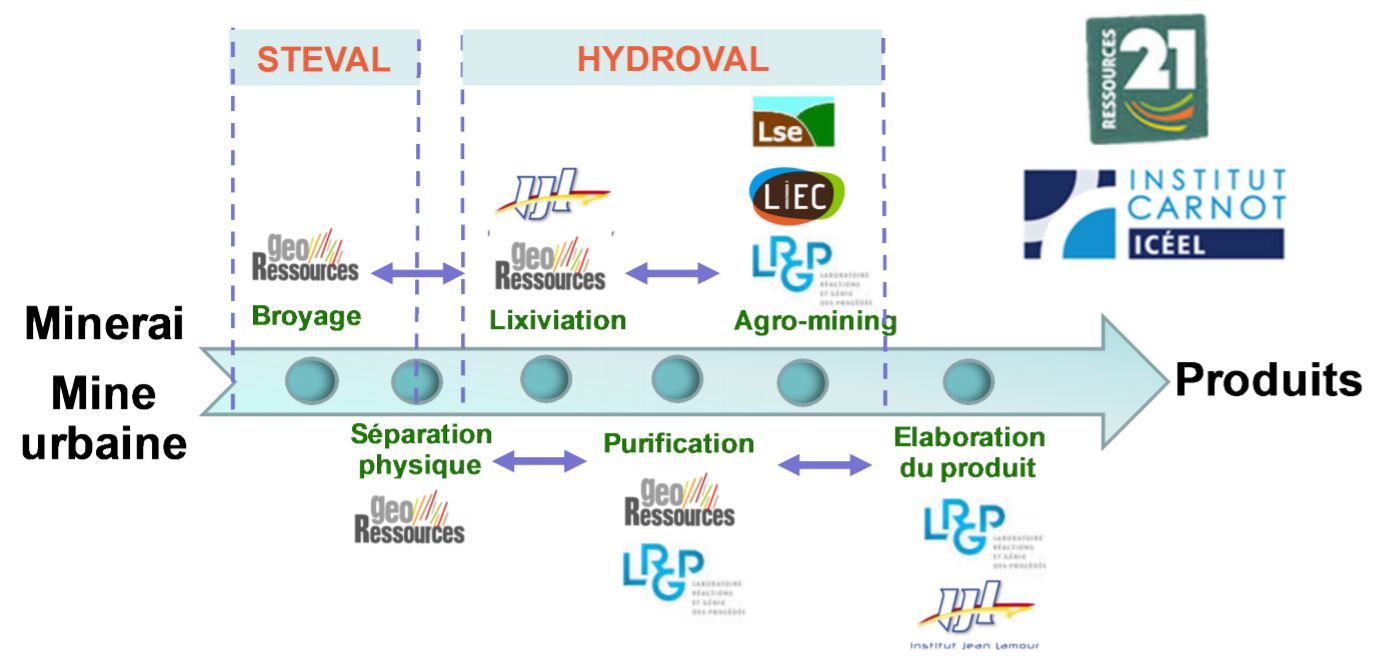
LASER ABLATION – ICPMS LABORATORY
The ICPM laboratory is focused to the analyses of trace element contents, especially metals and their isotopic ratios in minerals, solid and fluid inclusions are required to understand fluid-rock interactions at the origin of fluid and mass transfer in the crust. The development of techniques coupling laser ablation to ICPMS is a promising tool to analyse different targets at a few micrometers scale with low detection limits. In the CPER program, and with the contribution of the LABEX R21, the GeoRessources laboratory will acquire a new laser ablation system (nanoseconde laser 193 nm wavelength), an ICPMS (Agilent 8900 quadrupolar) and a high resolution ICPMS or TOF. This equipment will increase analytical possibilities and enable higher performances regarding the size of the ablation crater, together with a better sensitivity (up to ppb if possible). Our major targets are: - The geological fluids (fluid inclusions trapped in minerals), - the determination of fluids chemistry (major and traces elements, metals), - Experimental solutions (microquantities) set in capillaries, - Trace elements in minerals i) rare earth elements in uranium oxides, carbonates, apatites, fluorites, zircons, ii) traces elements in sulfides (strategic metals such as Ge, Ga, In ..), chemical tracers of fluid rock – interactions. - Isotopic ratios U-Th-Pb for dating U-Th host minerals. The new equipments will enhance the analytical potential of the laboratory for measuring traces elements in precise locations, both in paleofluids and minerals, and thus provide an international recognition for the LabEx R21 Georessources Laboratory.
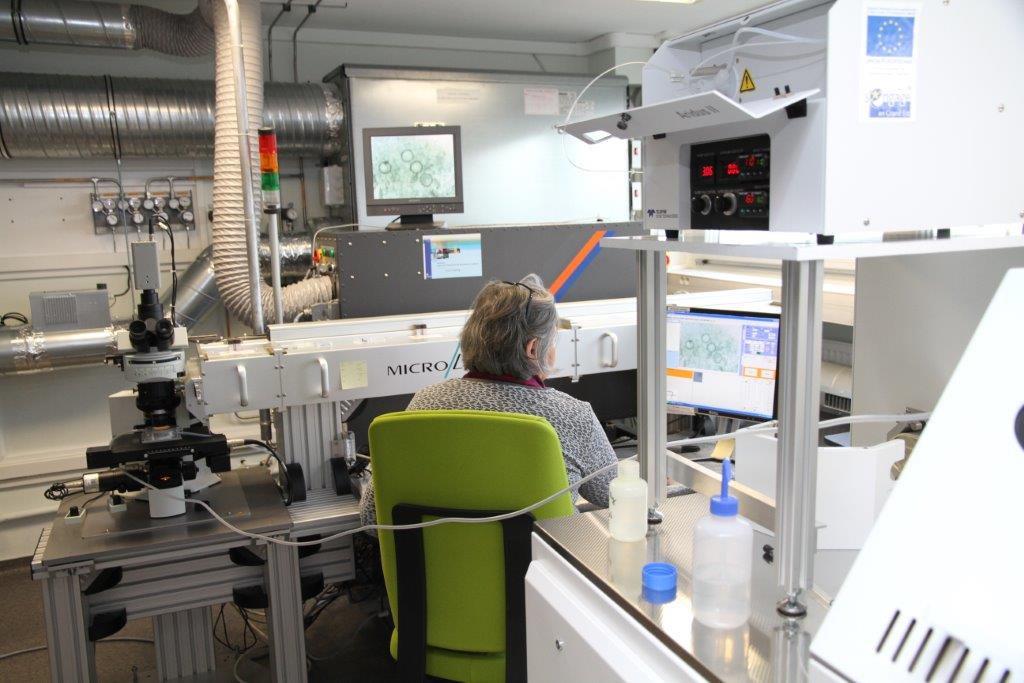
ISO6 CLEAN LAB COMPLEX
The new complex will serve not only the CRPG, but will also be available for other projects requiring clean lab conditions from the Geosciences laboratories of the University of Lorraine. Concerning RESSOURCES21, a significant part of the planned work related to the themes of Ni and Rare Earth Elements will be undertaken in the new complex. Though the main use of the complex will be for elemental separation prior to isotopic analysis, other applications are also welcome, such as the preparation of microsamples for studying finescale metal distribution in plants and soils. The construction of this complex will LabEx RESSOURCES 21 - Annual Report - 57 assure that Nancy will have an outstanding facility for the chemical preparation of a wide range of sample types for the coming 20 years, allowing us to remain among the leaders in the field of strategic metal research.
Conception of the facility - Three key points
I) Unification of all the clean labs of CRPG in a single complex, located on the 4th floor of the building
II) ISO6 air quality throughout the complex
III) Filtered laminar flow hoods with total air extraction
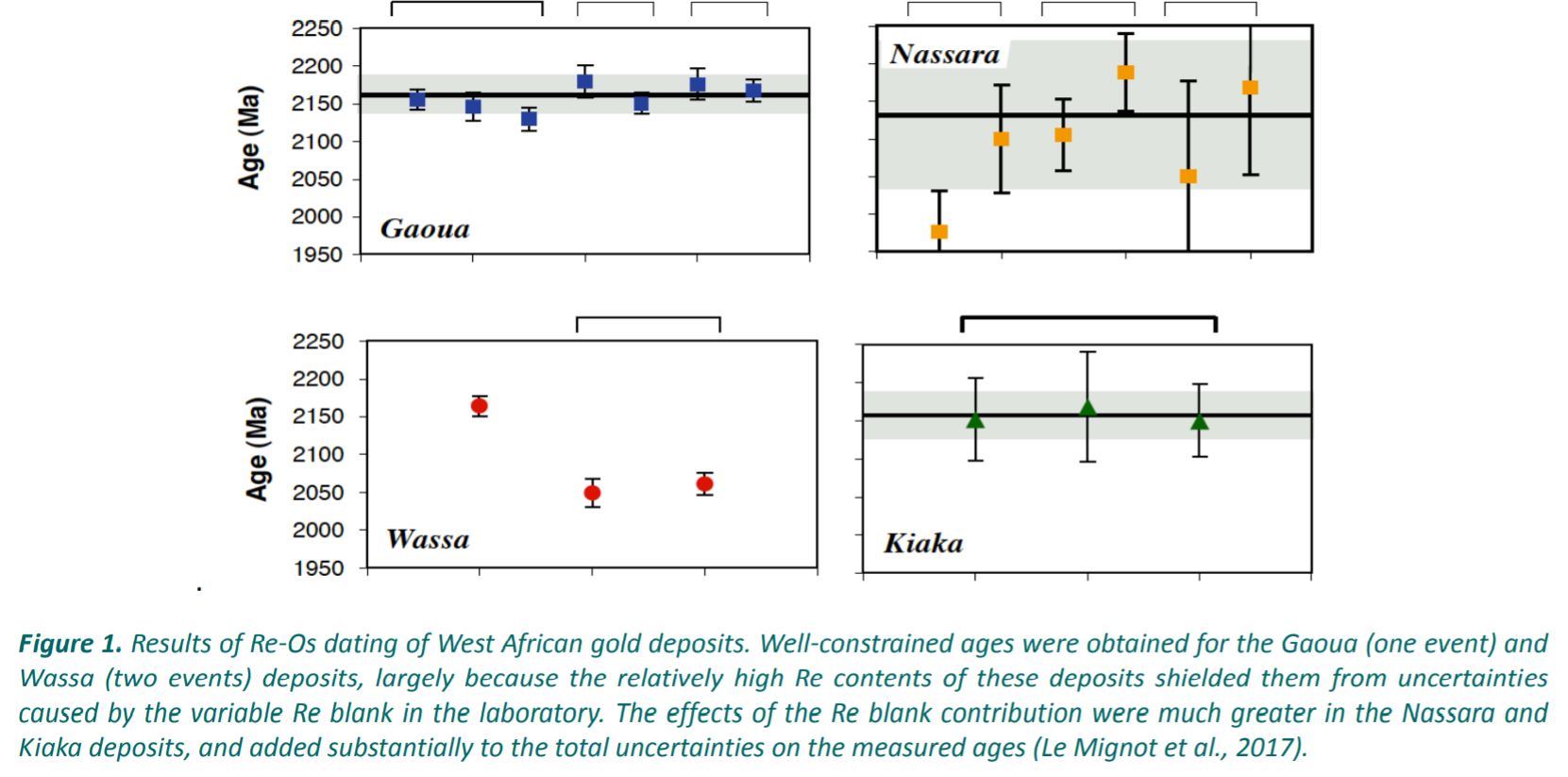
Micro-XRF
X-ray microfluorescence allows localized analysis of a sample with a maximum spatial resolution of around 20 µm. It is possible to detect elements from sodium to uranium with variable detection limits: from a few percent for the lightest elements (sodium) to less than ten ppm for the elements most sensitive to this technique (e.g. zirconium). It is also possible to quickly map centimetric samples without extended preparation (flat sample but no polishing or coating).
Technical specifications
- X-ray tube (Rh source) with polycapillary optics to focus the beam and achieve high brightness in a spot size of 100µm or 20µm
- Two Bruker XFlash (SDD-type) detectors to increase acquisition speed, identify diffraction peaks and limit shadowing effects on non-planar samples
- Analysis from Na under vacuum and from K at atmospheric pressure
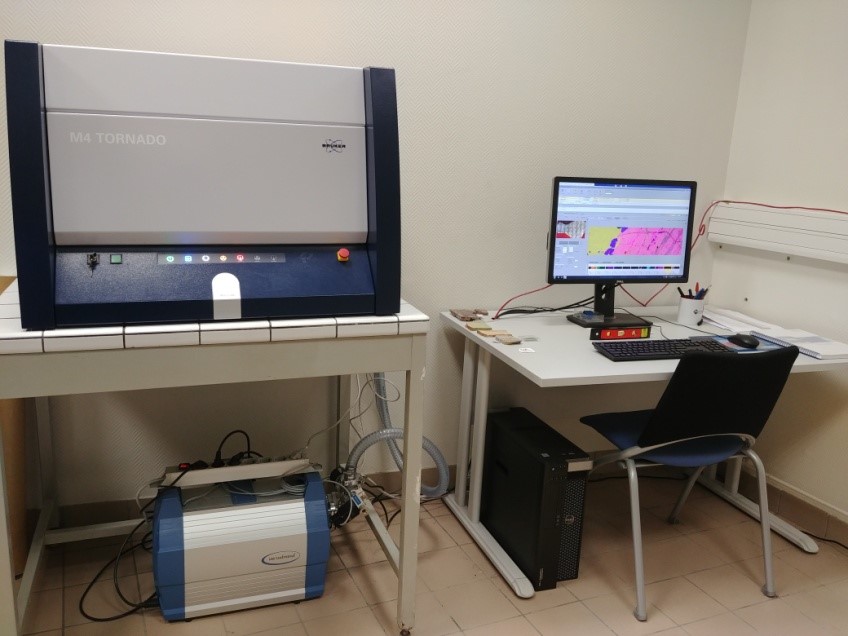
ION PROBES
The ion probe is an analytical instrument designed to measure the concentrations and isotopic compositions of all known elements on a microscopic scale, even at very low levels.
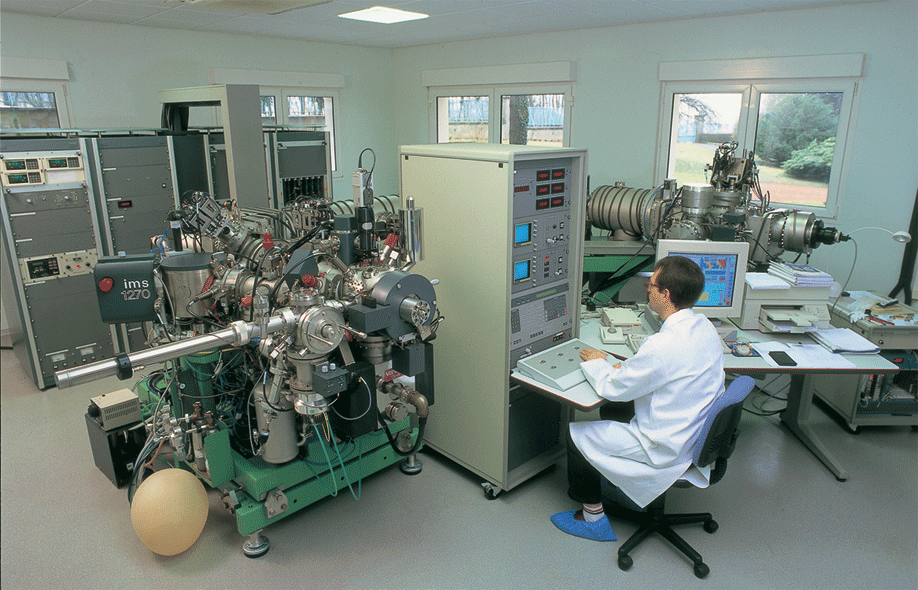
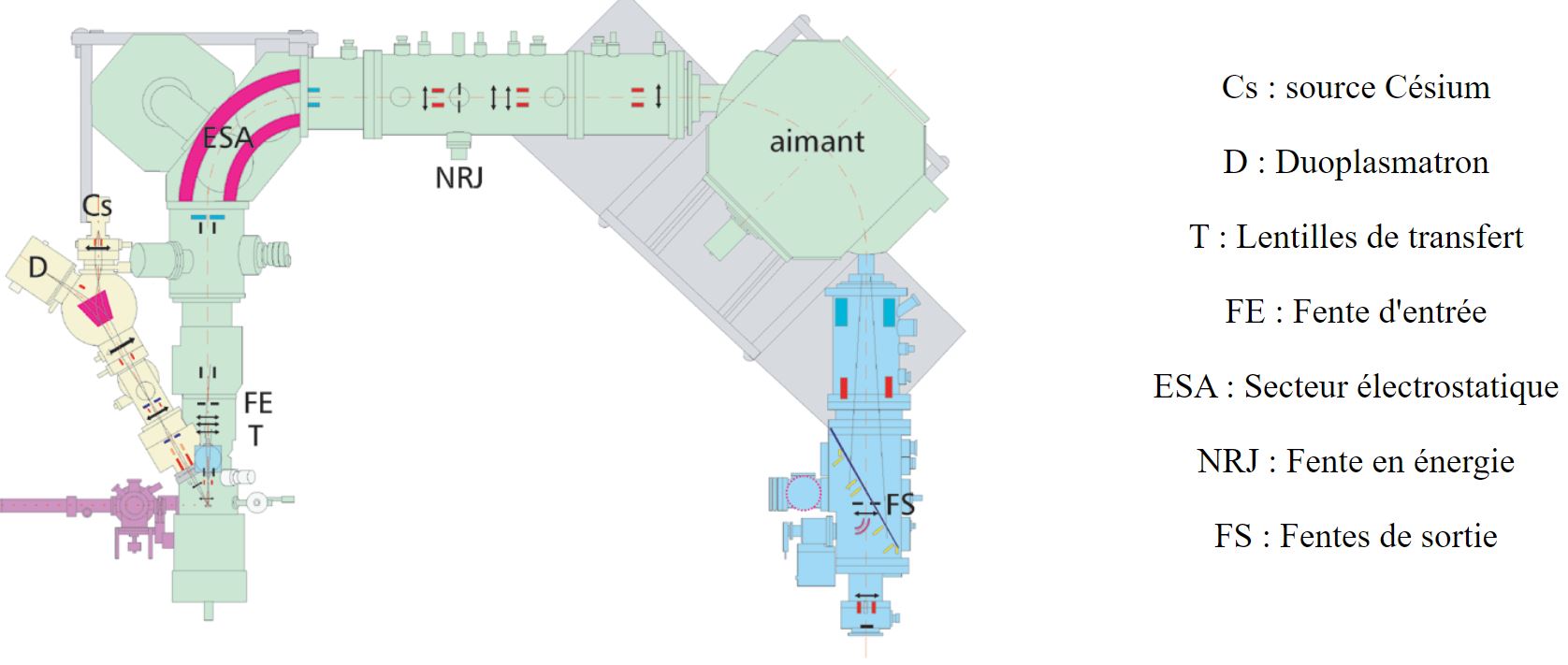
The new laboratory for K-Ar dating of clay minerals
The scientific platforms |
STEVAL
This test plant for investigating the efficient processing of ore minerals and residual substances is unique among European universities.
The size of an industrial mineral-processing plant, STEVAL was designed to be at the interface of academic knowledge, higher education, industrial applications, and environmental issues. WIth approximately 2,000 m² of technical space available, and equipped with more than 150 instruments dedicated to the study of solid-solid or solid-liquid separation, tests and experiments can be performed on laboratory-batch up to industrial scales.
GISFI
GIS Friches Industrielles (GISFI) is an in situ study site for remediation of polluted soils. Located at Homécourt (northern Lorraine), this former industrial wasteland is equipped with an array of sensors for monitoring and studying remediation processes for polluted and degraded soils.
gOcad
The GoCAD 3D-modelling code GoCAD is an advanced software package for digital geology and 3D spacial representation. GoCAD is used and financed by a consortium of 120 universities and 18 industrial partners, including a number of major petroleum and mining companies.
SARM
The Service d'Analyse des Roches et des Minéraux (SARM), the CNRS analytical research facility is hosted and managed by the Centre de Recherches Pétrographiques et Géochimiques (CRPG). The facility was founded in 1972 with the aim of harmonising the analytical potential of the CRPG with the needs of the geological community in France. Today, SARM is an important INSU research facility of and employs around fifteen technicians and engineers. SARM handles more than 6000 samples per year and around 60 different elements are analysed in its laboratories.

